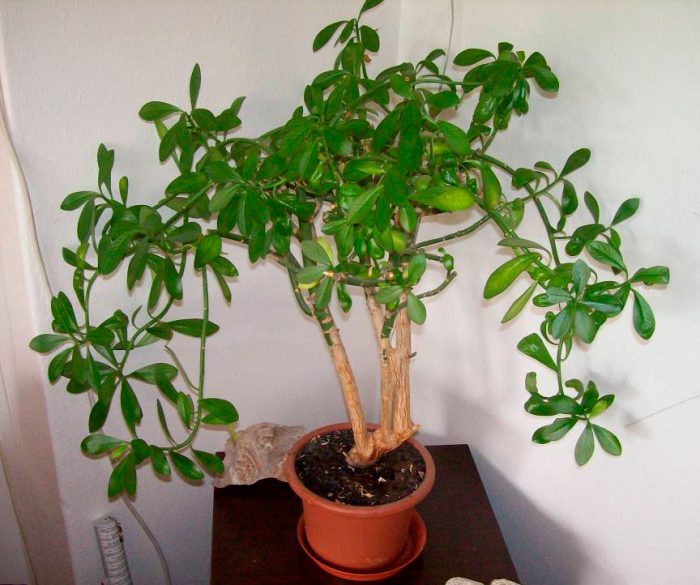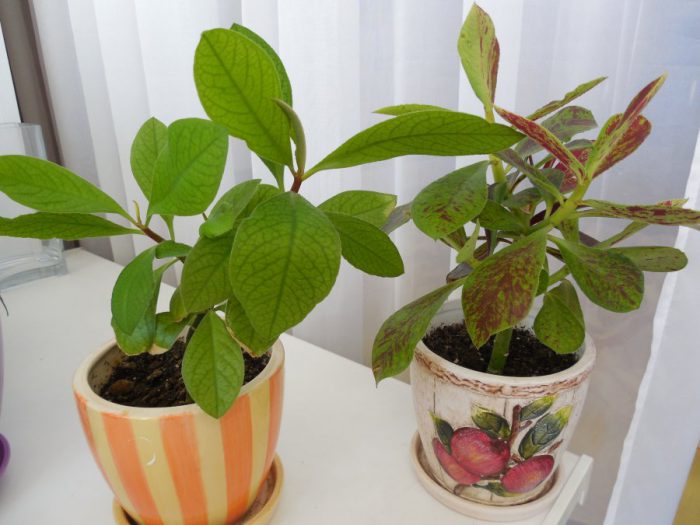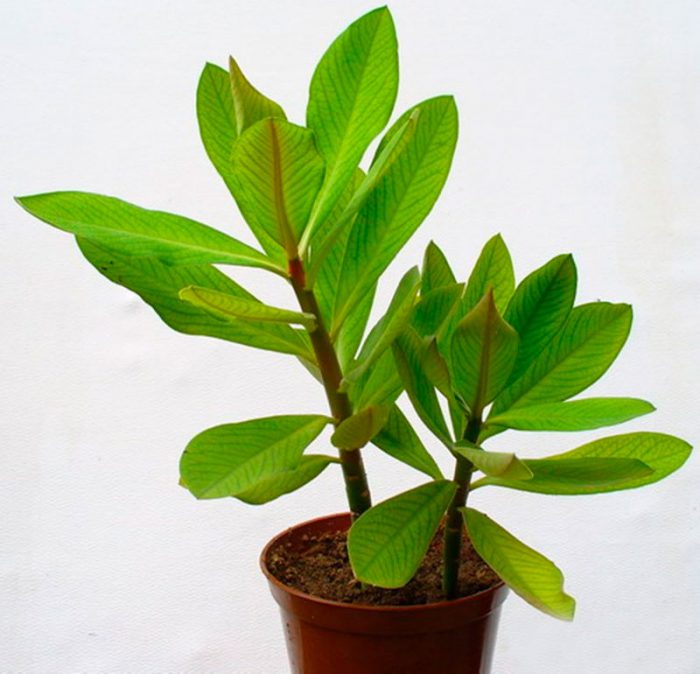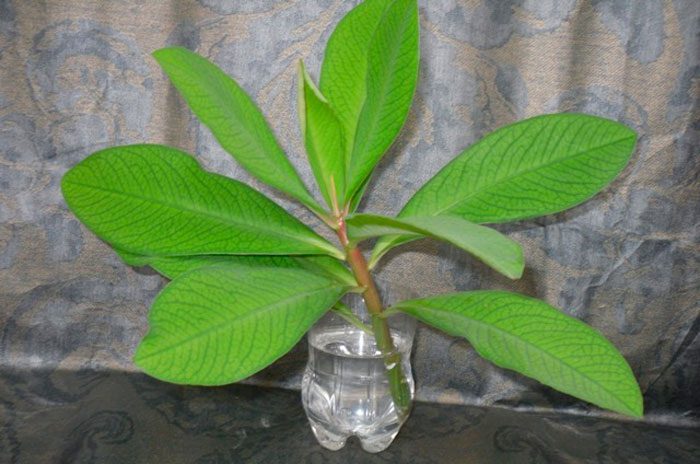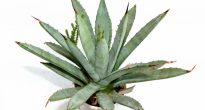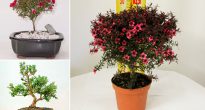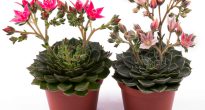Genus synadenium (Synadenium) is directly related to the Euphorbiaceae family. This genus unites about 20 plant species, which are represented by succulent trees and shrubs. In nature, they can be found in almost all subtropical and tropical regions. But despite the large number of species, only one is grown at home - the Grant's synadenium (Synadenium grantii).
This shrub is very tall. So, in natural conditions, it can reach a height of more than 3.5 meters. It is native to the arid regions of South Africa. A pale gray bark gradually forms on the surface of its fleshy, juicy green shoots. Alternate, short-petiolate leaflets are obovate and smoothly edged. On the pale green leaves there are clearly visible veins of a dark green color, forming a branched tree-like pattern. The length of the sheet plate is 15 centimeters and the width is 6 centimeters.
During the flowering period, thick, short peduncles, which are few-flowered, appear from the upper axils of the leaves. They have the shape of an umbrella and bear small, closed, red flowers, which are similar to inverted caps, with protruding bunches of "feathers" stamens. After the plant has faded, fruits of the same small size appear, which are 3-segment capsules with burgundy seeds.
Content
Home Synadenium Care
It is very easy to grow such a plant in an apartment environment, since it is not highly demanding in care. However, when grown indoors, synadenium does not bloom.
Illumination
Such a flower needs bright, but at the same time, diffused lighting. For its placement, it is best to choose a western or eastern window.
If there is little light, the stems will become elongated, and the flower will lose its spectacular appearance. Under intense lighting, especially with direct sunlight, burns appear on the surface of the leaf plates - brown spots.
Temperature regime
This is a fairly thermophilic plant that needs a temperature of 23-26 degrees in the spring-summer period.
In winter, the synadenium needs coolness. But it should be borne in mind that there should not be less than 10 degrees in the room. Otherwise, the flower may shed all the foliage.
Do not forget that the warmer it is in the room where the plant is located, the more light it will need. In the event that in winter the temperature regime is similar to the summer one, then the lighting intensity should be the same. For this purpose, you will need supplementary lighting with special phytolamps. If you do not provide additional lighting, then the internodes of the flower will become elongated, and some of the foliage will also fall off, and this will negatively affect its appearance.
How to water
Such a plant in natural conditions is in a semi-arid environment, in this regard, watering is done very carefully. So, it is recommended to water the plant only after the top layer of the substrate dries out 1 or 2 centimeters deep. Be sure to drain the excess liquid into the pan after watering. If water stagnates in the soil, this can provoke the appearance of root and stem rot.
However, it is impossible to overdry the substrate strongly. Otherwise, some of the leaves may fall off the bush.
With a cool winter, water the synadenium less. But in this case, it is worth paying attention to the rate of drying of the substrate.
You need to water it with soft water at room temperature, which should be well settled before that.
Humidity
This plant does not require high humidity, as it is accustomed to fairly dry air. However, for hygienic purposes, it is recommended that he regularly arrange a warm shower.
Pruning features
Such a flower grows rather quickly, and it can significantly increase the volume of green mass. So, in 12 months, its growth can be more than 25 centimeters. Systematic formative pruning will be needed to contain growth. They will also help to make the crown more lush due to the growth of a large number of side shoots.
Earth mix
A suitable soil should be light, neutral in acidity and rich in nutrients. To prepare the soil mixture, you will need to combine peat, turf and humus soil, as well as small brick chips and coarse sand, which should be taken in equal shares. In order to prevent the appearance of rot on the root system, a small amount of crushed charcoal should be poured into the substrate, and at the bottom of the pot, when planting, make a good drainage layer from broken shards (from clay) or use expanded clay.
You can also take ready-made potting soil for planting, which is sold in flower shops. However, experienced flower growers advise adding baking powder such as coarse sand and small brick chips to it.
Transplant features
Young specimens require an annual transplant in the spring. In this case, the new pot should be larger than the previous one. An adult plant is transplanted less often, usually once every 3 years.
Reproduction methods
Can be easily propagated in March or April stem cuttings... The stalk is cut from the top of the stem, and there must be 3 internodes on it. The stalk should be immersed for a while in a container with lukewarm water in order to stop the milky juice. The dried cutting should be planted in a mixture of sand and peat. Be sure to cover it with a transparent cap. Water is also suitable for rooting.
It is much more difficult to propagate by seeds. Sowing is carried out in the spring in sand mixed with earth. They are placed in a well-lit place where the temperature should be kept at around 18 degrees. Before sowing seeds, you need to study the instructions offered on the package or available in special literature.
Diseases and pests
It is resistant to pests and diseases. However, the plant can get sick due to violations of the rules of care.So, due to too low temperatures or stagnant liquid in the substrate, all the leaves can fall off and root rot can develop. It is also possible for some of the leaves to fall off when the light intensity changes (if the flower is moved to a darker place) or when the pot is turned relative to the light source.
Attention! Sinadenium is a highly toxic plant. If its milky juice gets into the stomach, it will cause serious poisoning, and in some cases, death. If it comes into contact with the surface of the skin, it causes an allergic reaction and irritation. Therefore, work with such a flower should only be done with rubberized gloves.
Video review
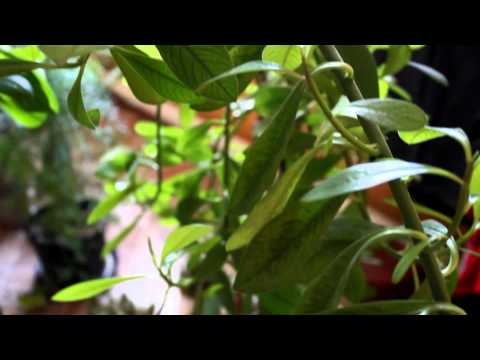

Watch this video on YouTube

